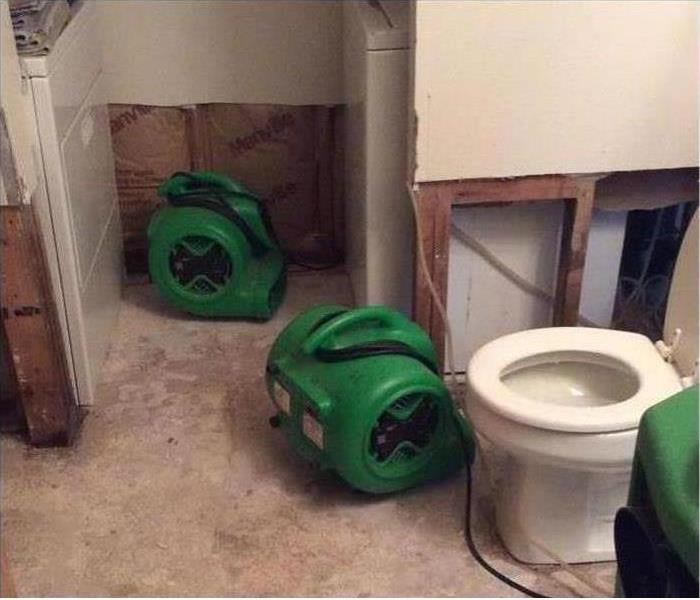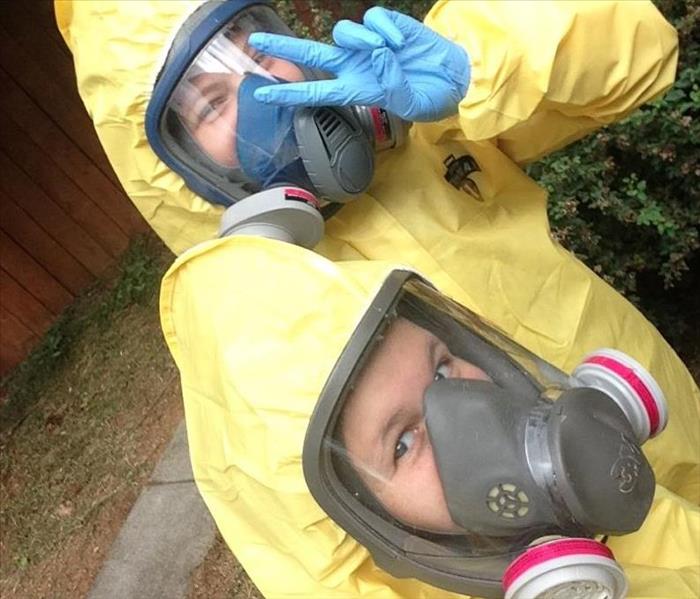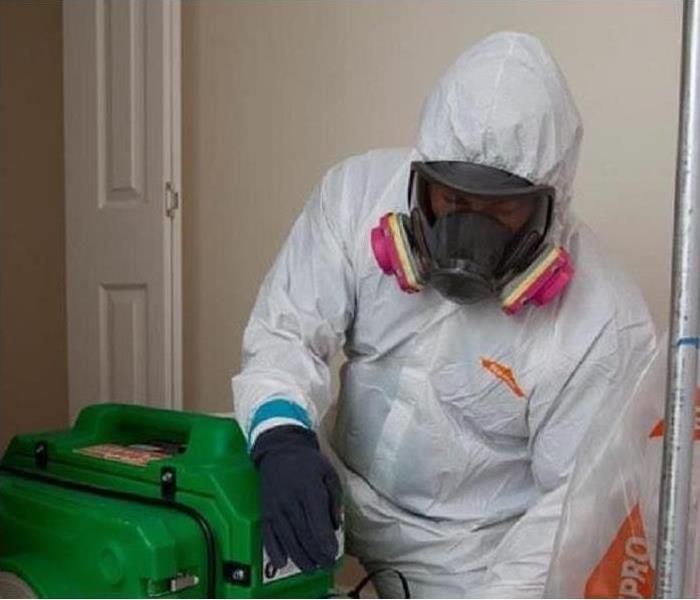Toilet Overflow Troubleshooting
3/4/2022 (Permalink)
 Don't know who to call or if you will need remediation services? Call (360) 254-0049 and we will walk you through the process.
Don't know who to call or if you will need remediation services? Call (360) 254-0049 and we will walk you through the process.
An overflowing toilet is a frustrating problem, no matter what the circumstances involve. However, when the overflow involves a sewage backup, the problem becomes much more serious. Sewer damage could contain viruses, bacteria, and other illness-carrying microbes. The possible risks associated with contamination could affect your home and your family for many years.
- Toilet Overflow: Blockage in the plumbing system causes the toilet to overflow. In this case, the flooding water hasn't passed through the sewer system. Water damage may occur, but you won't have to involve the sewage company.
- Plumbing System Overflow: Water from the sewage system backs up through residential lateral pipes and into homes. This water is often filled with serious contaminants, such as raw sewage.
If you can't tell whether you have an overflowing toilet or a sewage situation, contact a professional immediately. If you have a flooded toilet, you may be able to handle the problem yourself.
Step 1: Stop Flushing
Much of the time when homeowners see something they don't like in the toilet, they flush. Unfortunately, this will only make a flooded toilet situation worse. Each flush contains more than a gallon of water that you'll have to clean up off the floor.
Step 2: Turn Off the Water
There should be a water shut-off valve located near the floor behind the toilet. Once the water has been shut off, you won't have to worry about more water making the situation worse.
Step 3: Clean Up Spilled Water
If the toilet was only flushed once or twice, you can probably put on disposable gloves and mop it up pretty quickly. If there were more flushes and the resulting four to five gallons of water, you may want to contact a professional to prevent water damage.
Step 4: Address the Clog
Hopefully, you'll be able to dislodge whatever was stuck in the pipes and return to your normal daily activities. Otherwise, you may need to contact a professional.
Remember to protect your home and family from sewer damage. Learn how to recognize the type of trouble you have and take the right steps for correction.
Examples of Biohazard
3/8/2021 (Permalink)
 Two of our technicians all suited up and ready to help!
Two of our technicians all suited up and ready to help!
Biohazard is an umbrella term for biological materials that are a threat to living organisms. If you come into contact, biohazards can pose serious harm. Not just to you, but anyone who frequents your home or commercial property. Some people may not know everything that the word biohazard encompasses and how to clean it up or that there are levels of biohazard, each one presenting different threats.
Examples of Biohazard
There are different kinds of biohazard and we hope these examples will never present themselves to you.
Blood: This includes anything that has come into contact with blood, or other bodily fluids. Bloodborne pathogens and fluids can lead to disease if they come into contact with someone.
Animal waste: This is especially true if the animal is sick in anyway.
Microbiological waste: Most commonly found in laboratory settings, examples include culture dishes and discarded viruses.
Medical waste: Needles, glass slides, and scalpels are called sharps waste.
Levels of Biohazard
There are numerous levels of biohazard, four to be exact, with different threats. Level one includes E. Coli, Bacillus subtilis, and more. These materials are just a minimal threat to people and the environment. Level two includes HIV, Hepatitis B, and Salmonella. These have the possibility to make people extremely sick. Level two biohazards are contracted through contact with any infected materials or items. Level three includes tuberculosis and other airborne pathogens. They expose people to serious illnesses. Level four biohazards pose the highest threat levels. The diseases they cause have no treatments, and could even be life threatening. This includes the Ebola and Lassa viruses. For threats of this nature it is recommended to contact your nearest EPA office for help.
What Do You Do About Them
If you experience a biohazard exposure on your Southwest Washington property it needs to be cleaned immediately, but most levels require specialty cleaning services. That’s when you call SERVPRO of Vancouver/ Clark County (360) 254-0049. We comply with health regulations and possess all of the equipment needed for safe disposal. We will decontaminate your building in the event of trauma, chemical spills, sewage backups, hoarding, and more. When it comes to biohazard, the substances must be cleaned up properly to prevent serious health risks.
Biohazard Cleanup? Call SERVPRO of Vancouver
3/24/2020 (Permalink)
 Biohazards like flood water or sewer backups should be considered an emergency and dealt with as quickly as possible
Biohazards like flood water or sewer backups should be considered an emergency and dealt with as quickly as possible
Biohazard contaminants should be considered very dangerous as they can pose a serious health risk. Sewer backups and flood water are two common biohazard scenarios that can affect homes and businesses. SERVPRO Franchise Professionals have the training, protective gear, and specialized equipment necessary to safely clean and restore this type of contamination.
Need Biohazard Cleanup?
Call Us Today (360) 254-0049
After any biohazard or sewage contamination in your home or business, your primary focus should be safety:
- Is it safe to stay in the house?
- Exposure to biological and chemical contaminants can pose serious health consequences.
- Flood water can contain sewage, pesticides, and other contaminants.
- Only do activities that are safe for you to perform.
What to Do After a Contamination
- Stay out of affected areas.
- Call emergency service personnel if the situation is life-threatening.
- Treat all bodily fluids as if they are contaminated.
- Turn off the HVAC system if there is sewage damage.
What Not to Do After a Contamination
- Don’t leave wet fabrics in place. Hang furs and leather goods.
- Don’t leave books, magazines, or other colored items on wet carpet or floors.
- Don’t use your household vacuum to remove water.
- Don’t use television or other household appliances.
- Don’t turn on ceiling fixtures if ceiling is wet, and keep out of rooms where ceilings are sagging.
 Don't know who to call or if you will need remediation services? Call (360) 254-0049 and we will walk you through the process.
Don't know who to call or if you will need remediation services? Call (360) 254-0049 and we will walk you through the process.






 24/7 Emergency Service
24/7 Emergency Service
